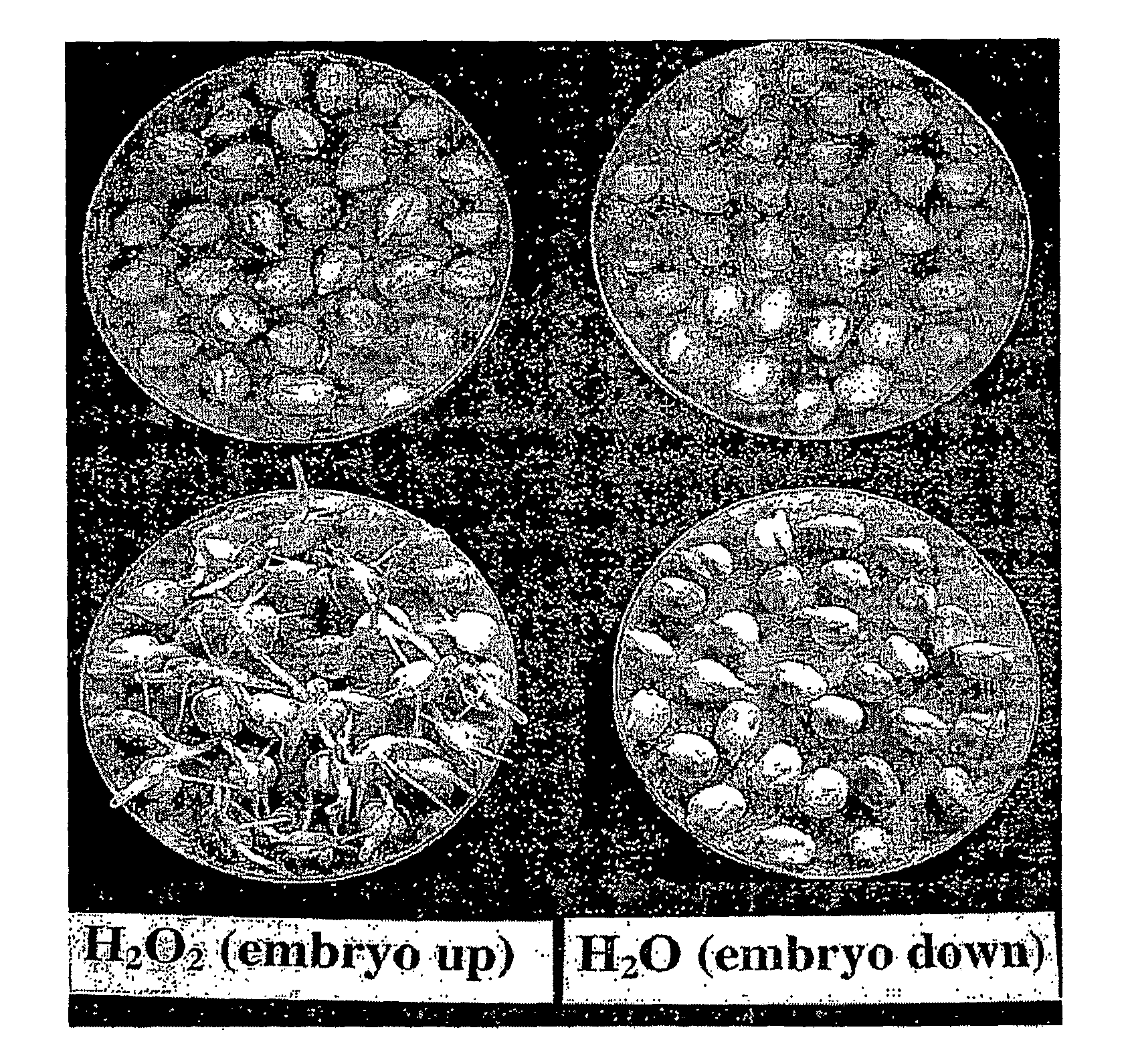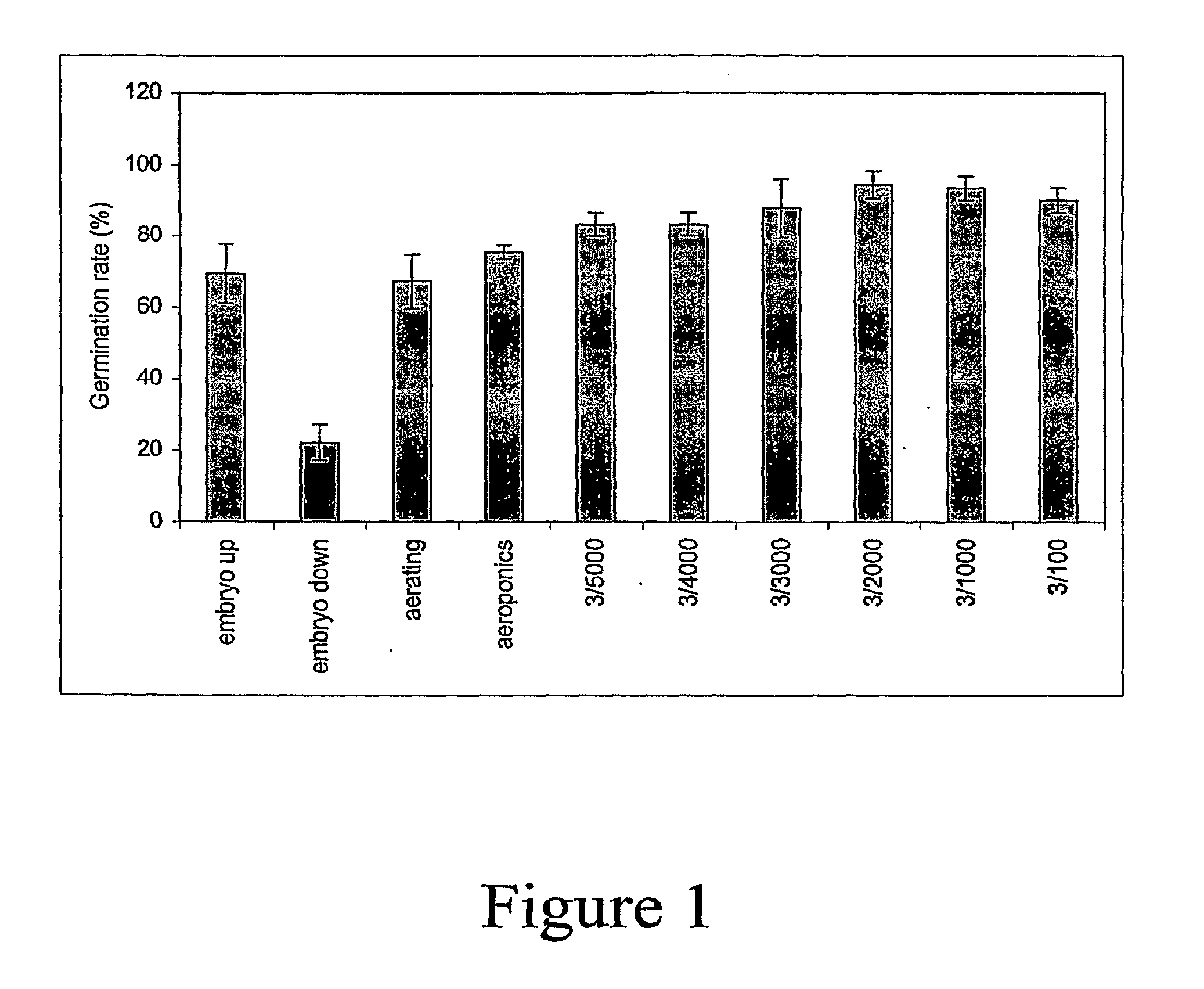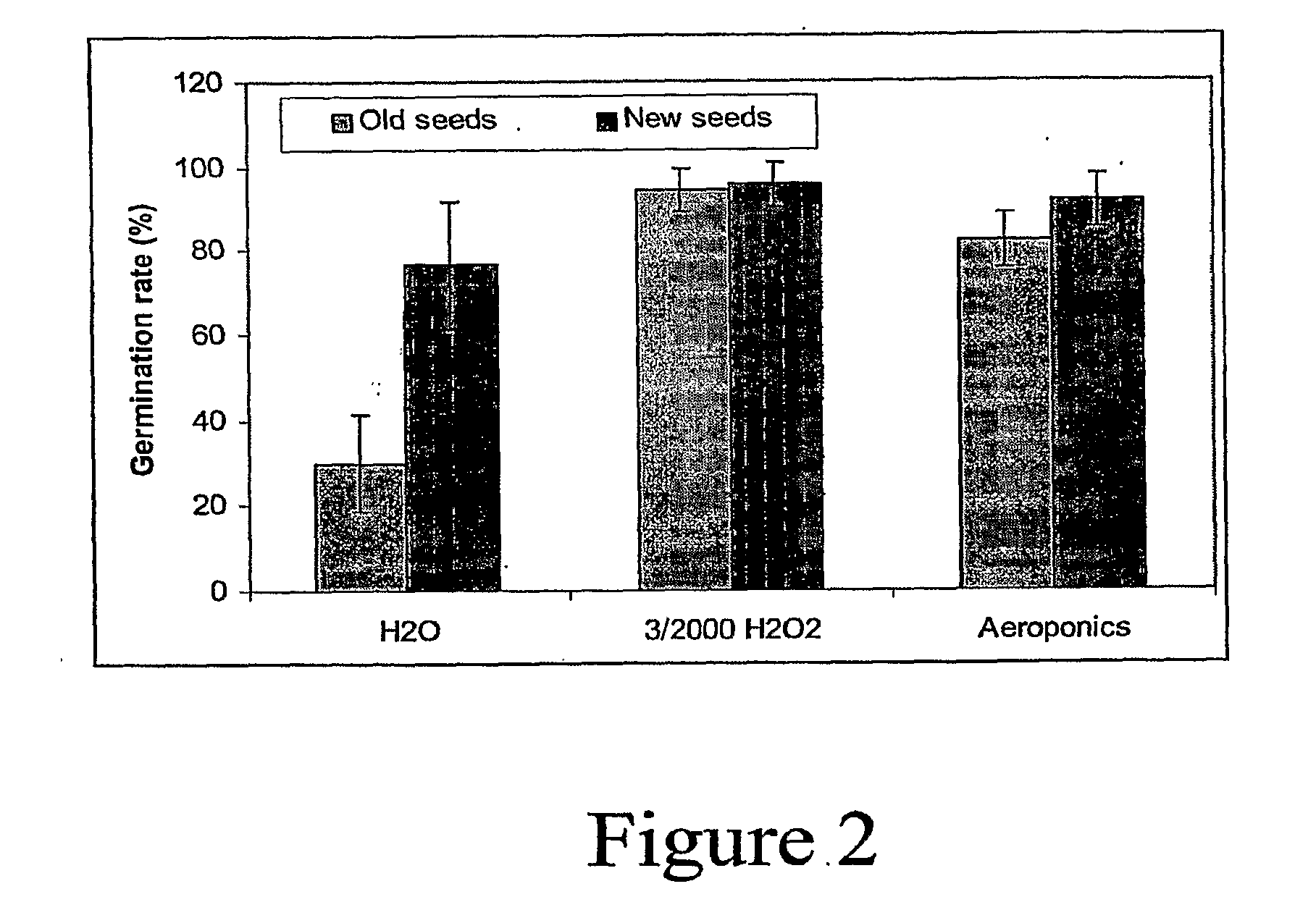Materials and Methods for Providing Oxygen to Improve Seed Germination and Plant Growth
a technology of oxygen and seed germination, applied in the field of materials and methods for providing oxygen to improve seed germination and plant growth, can solve the problems of 500,000 acres, severe reduction of seed germination, lack of oxygen or anoxia, etc., and achieve the effect of improving aerobic activity and improving water quality
- Summary
- Abstract
- Description
- Claims
- Application Information
AI Technical Summary
Benefits of technology
Problems solved by technology
Method used
Image
Examples
example 1
Materials and Methods
[0079]Corn seeds of FR27 x FRM017 (GRADE: 24RD) were provided by Illinois Foundation Seeds Inc. Two sets of seeds were used: one set of seeds consisted of fresh seeds and the other set of seeds consisted of seeds that were two-years old.
[0080]Chemicals used in the Example included: N, N-Dimettyltrimethylslylamine (cat no. 41716, Fluke Chemika, Switzerland), hydrogen ionophore I—Cocktail B (cat no. 95293, Fluke Chemika, Switzerland), 3% H2O2, Cumberland Swan Smyrna, USA. Other conventional chemicals used in the Example were provided by Fluke Chemika, Switzerland.
Germination Rates
[0081]Aeroponics: 25 liters of pure water were poured into a big square tank. A 5 mm thick plastic sheet was used to cover the tank. The plastic sheet included 65 holes with 48 mm diameters that were evenly distributed throughout the sheet. Plastic baskets with sides that were 50 mm high and having external diameters of 55 mm at the top and 37 mm at the bottom were situated in each hole. ...
example 2
Materials
[0109]Corn seeds, FR27 x FRMO17, were provided from Illinois Foundation Seeds, Inc. All the chemicals were from Sigma-Aldrich except the compositions comprising oxidizing agents. Solid compositions comprising oxidizing agents include: sodium percarbonate, calcium peroxide and magnesium peroxide, which were provided by Solvary Interox, Inc. Liquid compositions comprising oxidizing agents include 3% hydrogen peroxide, which was provided by Wal-Mart.
Oxygen Solution or O2 Buffer Preparation
[0110]One hundred milligrams of each of the above solid compositions comprising oxidizing agents was put in a 50 ml polypropylene tube, respectively, unless specialized. 50 ml de-ionized water or nutrient solution was put into the tubes. The strength of the nutrient solutions was 25%, 50%, 100%, 200% or 400% of Yan's formula (Yan, F. et al., “Adaptation of active proton pumping and plasmalemma ATPase activity of corn roots to low root medium pH,”Plant Physiology, 117:311-319 (1998)). The oxyg...
example 3
Materials
[0148]Corn seeds, FR27 x FRMO17, are from Illinois Foundation Seeds, Inc. All of the chemicals were from Sigma-Aldrich except for the “oxygen fertilizers”: magnesium peroxide (Oxygen Fertilizer 1) and calcium peroxide (Oxygen Fertilizer 2), both of which were provided by Solvary Interox, Inc., and the 3% hydrogen peroxide, which was from Wal-Mart.
Oxygen Solution or O2 Fertilizer Preparation
[0149]One hundred milligrams of each of the above solid compositions was put in a 50 ml polypropylene tube, respectively, unless specialized. 50 ml de-ionized water or nutrient solution was put into the tubes. The strength of the nutrient solutions was 25%, 50%, 100%, 200% or 400% of Yan's formula (Yan, F. et al., “Adaptation of active proton pumping and plasmalemma ATPase activity of corn roots to low root medium pH,”Plant Physiology, 117:311-319 (1998)). The oxygen solutions were allowed to equilibrate overnight before any measurements were made.
Culture Methods
[0150]All of the seeds wer...
PUM
| Property | Measurement | Unit |
|---|---|---|
| diffusion coefficient | aaaaa | aaaaa |
| diffusion coefficient | aaaaa | aaaaa |
| temperature | aaaaa | aaaaa |
Abstract
Description
Claims
Application Information
 Login to View More
Login to View More - R&D
- Intellectual Property
- Life Sciences
- Materials
- Tech Scout
- Unparalleled Data Quality
- Higher Quality Content
- 60% Fewer Hallucinations
Browse by: Latest US Patents, China's latest patents, Technical Efficacy Thesaurus, Application Domain, Technology Topic, Popular Technical Reports.
© 2025 PatSnap. All rights reserved.Legal|Privacy policy|Modern Slavery Act Transparency Statement|Sitemap|About US| Contact US: help@patsnap.com



